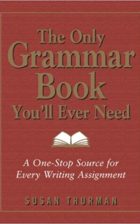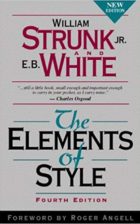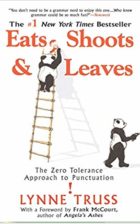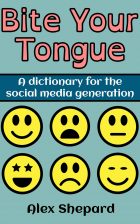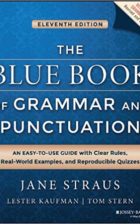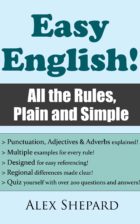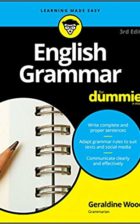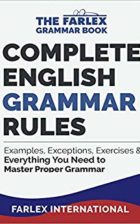Dashes come in two main forms: en dashes and em dashes. These perform several functions, from conveying the relationship between two words or phrases, to indicating interruptions, omissions, and even parenthetical information.
As is so often the case, there are differences in how dashes are used in American and British English, so these will require extra attention when writing for a specific audience.
To avoid any errors in your writing, here is how to use dashes correctly:
1. Parenthetical Dashes
2. Linking Dashes
2.1 En Dashes with Phrases
2.2 En Dashes with Prepositions
3. Interrupted Speech
4. Bibliographies
1. Parenthetical Dashes
Dashes can be used to mark off a part of a sentence that is parenthetical. By doing so, they bracket the information that is supplemental:
My wife has two kids—a boy and a girl—from a previous marriage.
In this example, “a boy and a girl” is separate from the main sentence: “My wife has two kids from a previous marriage.” This bracketed section (“a boy and a girl”) simply gives us more information that is relevant to the sentence but which isn’t actually required for us to understand it. This is very similar to using parentheses, or brackets, for the same purpose:
My wife has two kids (a boy and a girl) from a previous marriage.
However, unlike with parentheses, a parenthetical section can be marked off with just a single dash if it uses the end of the sentence to close it off:
My wife has two kids from a previous marriage—a boy and a girl.
It is important to remember that American and British English use different punctuation styles for parenthetical dashes.
In American English, these are written with em dashes. In addition, there are no spaces either before or after them: they touch the words on both sides directly.
Jackson Pollock’s art—which has a very distinct style—is polarizing.
In British English, en dashes are preferred to mark off parenthetical text. There is also a space on both sides of the en dashes to separate them from their neighboring words.
Jackson Pollock’s art – which has a very distinct style – is polarizing.
In both of these examples, the dashes work in the exact same way. The difference is simply a visual one.
When you’re writing, remember to take such regional differences into account. And above all, be consistent: never mix these different styles in the same text.
As a final note, never use any other punctuation (such as periods, commas, colons, etc.) directly before or after a dash.
2. Linking Dashes
In both American and British English, en dashes are used to indicate a relationship between two words, phrases, or numbers. The meaning of this is similar to “and” or “to,” and it implies that there is a strong relationship between the elements that are joined together:
The Australia–India cricket game was cancelled.
Australia versus India
The generals met for a North–South peace agreement.
A peace agreement between the North and the South
The 2013–2017 funding program was a failure.
From 2013 to 2017
In comparison to hyphens, which turn the connected words into a single unit, the words or numbers that are joined by en dashes are still rather separate: it is simply their relationship to each other that is being expressed.
As we can see in the above examples, when connecting two single words or numbers, there are no spaces on either side of the en dash. However, when either one or both of the joined words is a phrase, then rather add an empty space on both sides of the en dash. This will keep the meaning clearer for readers:
The February 2016 – June 2018 campaign was successful.
Here is how the sentence would look if we took away the spaces from around the en dash:
* The February 2016–June 2018 campaign was successful.
Now it seems like the relationship is between “2016” and “June” rather than between “February 2016” and “June 2018.” In cases like these, adding spaces around the en dash will help to avoid ambiguity and confusion.
2.1 En Dashes with Phrases
When a word or an affix (that is, a prefix or a suffix) is joined to a phrase that consists of two or more words, then use an en dash to connect them, not a hyphen:
She was a famous New Zealand–born singer.
Economic recovery post–World War Two was difficult.
The pre–World Cup adverts were everywhere.
If the words in a compound are already joined with a hyphen, don’t use an en dash to link it to another word. The following example is wrong:
* Only 21–25-year-olds are applicable for the role.
Instead, rather use a suspended hyphen:
Only 21- to 25-year-olds are applicable for the role.
2.2 En Dashes with Prepositions
If the words or numbers in question are preceded by a preposition, then an en dash can’t be used to join them together.
Here are some examples to make this clearer:
* The campaign ran from July–October last year.
* Between 2012–2013, she visited home twice.
In cases like these, where a preposition comes directly before the related words or numbers, you have to write the wording in full:
The campaign ran from July to October last year.
Between 2012 and 2013, she visited home twice.
Note that the preposition “from” usually links with the word “to,” and the preposition “between” usually links with the word “and.”
3. Interrupted Speech
In both American and British English, em dashes can be used to indicate an interruption. If you want to show that a line of dialogue cuts off abruptly, you can simply insert an em dash at the appropriate point:
“Did you hear about Jenny? Apparently, she—”
“Stop,” said Taylor, raising her hand. “I don’t want to know.”
This can be an effective way to make your dialogue sound more dynamic and natural. Just be careful not to overuse it: too many interruptions will disrupt the flow of your writing and annoy your readers.
You can also use ellipses for a similar effect. However, ellipses convey that the line in question trails off instead of being interrupted. See the section on ellipses for more information about using them for this purpose.
4. Bibliographies
Em dashes are sometimes used in referencing systems, such as bibliographies.
When an author is listed more than once, certain styles suggest replacing the repeated names with three em dashes. By doing so, the list is given a cleaner look:
Adams, Douglas. The Hitchhiker’s Guide to the Galaxy. London: Pan Macmillan, 2017.
Marukami, Haruki. A Wild Sheep Chase. London: Vintage, 1982.
———. Norwegian Wood. London: The Harvill Press, 2001.
———. Kafka on the Shore. London: Vintage, 2014.
Pratchett, Terry. Small Gods. New York: HarperCollins, 2008.
This is the same as writing the entries in full like this:
Adams, Douglas. The Hitchhiker’s Guide to the Galaxy. London: Pan Macmillan, 2017.
Marukami, Haruki. A Wild Sheep Chase. London: Vintage, 1982.
Marukami, Haruki. Norwegian Wood. London: The Harvill Press, 2001.
Marukami, Haruki. Kafka on the Shore. London: Vintage, 2014.
Pratchett, Terry. Small Gods. New York: HarperCollins, 2008.
When the same name is used multiple times in a row, the bibliography can start to look a bit cluttered. However, there are some publishers that avoid this use of the em dash, so always check if your writing must follow a particular style guide.
For more help with your grammar, check out these fantastic books:
